Driving in Italy
Driving in Italy can be an exciting and unique way to explore all that it has to offer, but it can also be a challenge for those unfamiliar with the country’s roads and driving culture.
Driving in Italy can be an exciting and unique way to explore all that it has to offer, but it can also be a challenge for those unfamiliar with the country’s roads and driving culture.
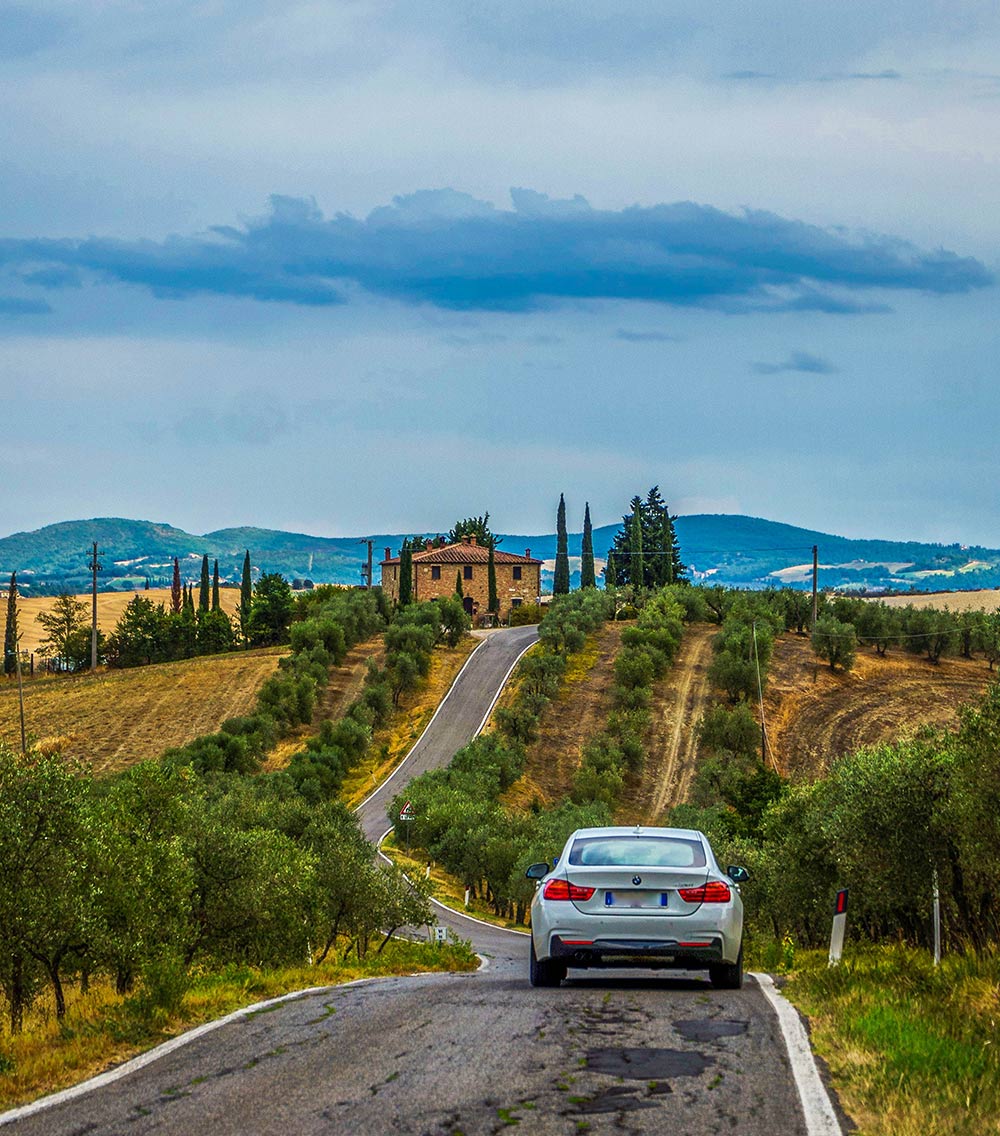
This travel guide is designed to help you navigate the roads of Italy with confidence and ease. It covers everything you need to know, from the rules of the road and navigating Italian cities to renting a car and parking tips. Whether you’re planning a road trip through the countryside or navigating the narrow streets of a historic city, this guide will provide you with all the information you need to have a safe and enjoyable driving experience in Italy.
By the end of this guide, you’ll be well-equipped to explore Italy by car and have the knowledge you need to stay safe on the roads. So buckle up, and let’s hit the road!
Driving in Italy can be a fun and exciting way to explore the country, but it’s not always the most convenient or practical option. One of the most popular alternatives to driving in Italy is taking public transportation.
If you are visiting cities in Italy, you can take public transportation. Italy has an extensive network of buses, trains, and metros that can take you to just about any destination you want to go to. You’ll avoid city traffic, parking, ZTLs, one-way streets, narrow roads, and pedestrian streets.
If you plan on spending time in the countryside, you may need to drive. Public transportation may not be available in remote villas and accommodations.
Driving your own car also gives you more freedom because you can stop wherever and whenever you want. You are not required to adhere to any public transportation schedules. It’s also the best option if you have children, a large number of passengers, or a large amount of luggage.
Renting a car in Italy is a popular and convenient option but there are a few things you need to know before renting a car in Italy to ensure a smooth and stress-free experience.
Firstly, you need to be at least 18 years old to rent a car in Italy, and most rental car companies require that you have a valid driver’s license and a credit card. A credit card is required but maybe you can make an arrangement with the rental company and use a debit card instead.
When it comes to choosing a rental car, you’ll have a variety of options to choose from, including economy cars, mid-size cars, luxury cars, and even vans and SUVs. Be sure to consider the size of the car you need, as well as any additional features you might require, such as GPS or a child seat.
It’s also important to note that Italy has some unique driving rules and regulations that you’ll need to follow when renting a car. For example, you’ll need to have a reflective vest and a warning triangle in your car at all times, and you’ll be required to carry an International Driving Permit if you’re driving on a non-European Union license.
When it comes to insurance, most rental car companies in Italy offer a variety of options, including basic liability insurance, collision damage waiver, and theft protection. Be sure to carefully review the terms and conditions of your rental agreement to ensure you’re fully covered in case of an accident or theft.
Italy is a country that is best explored at a leisurely pace, with stunning landscapes and breathtaking views that are best appreciated while driving. Some areas are better to be explored by car and driving in some areas can be very stressing.
If you’re planning on leaving Florence to visit the countryside of Tuscany and its small cities and villages such as San Gimignano, Volterra, Siena, Pienza, Montepulciano, Montalcino, Lucca, the coastal towns of Cecina, Forte dei Marmi, or Bolgheri, or the vineyards and rolling hills of Chianti, then you’ll need a car.
You’ll also need a car if you’d like to explore the small wine villages of Barolo, Alba, Asti, or La Morra. Usually, the Vineyards and wineries are only accessible by car. Sometimes there are guided tours from nearby cities though.
Although the region of the Dolomites has an excellent public transportation system and you could visit without a car, we suggest you get a car. You can make as many stops as you want to explore the lush hills and enjoy the scenic spots!
Puglia has many small towns and beaches and you will need a car to explore all of them. You will be able to explore the famous trulli and Basilicata to see Matera and its sassi.
The best way to explore Sicily is by car by far. The main cities such as Catania, Palermo, and Siracusa can be reached by train, but the trains are frequently backed up and crowded. If you want to get to remote beaches, and archaeological sites in Sicily, you’ll also need a car.
You will need a car in Sardinia if want to explore everything this island has to offer!
This region has many small towns and hidden gems that you can explore only by car!
There are a lot of things to see near the Italian lakes (Lake Como, Lake Garda, Lake Orta) and we suggest you get a car if you want to see everything like us!
Driving in Amalfi is stressful. The streets are very narrow, they are next to the cliffs and there are also huge buses. It’s not fun. Do this only if you are an experienced driver or like the adrenaline.
In general, you don’t need a car to explore the five villages of Monterosso, Vernazza, Corniglia, Manarola, and Riomaggiore. You can explore these villages by taking the train.
The worst, craziest, and most aggressive driving in Italy occurs in these two cities. Driving through these cities is not even an option. But it’s fine outside! To avoid the city center, simply pick up your rental car at the airport.
Venice’s roads are canals. There is no reason to have a car in Venice because you won’t use it. If you’re planning a longer trip such as the Domolites, start your rental after you leave Venice.
We present some general rules for driving in Italy:
According to Italian law, you should wear seatbelts.
Children who are under 36 kilograms (97 pounds) or 150 centimeters (4 feet, 9 inches) must always be in the car seat in the back of the car.
A blood-alcohol level of more than 0.05 percent is considered legally intoxicated in Italy. Drivers with a level of 0.05 to 0.08 face fines, up to one month in jail, and a community service requirement.
Do not drive in an area with a ZTL sign or one marked Area Pedonale (limited traffic or pedestrian zones).
It is illegal to make a right turn on a red light even if you stop first.
Yield to traffic on the right when you are at a junction or crossroads.
At roundabouts, yield to traffic that is already in the roundabout.
When parking on an urban street, park on the right-hand side. In marked “blue zone” areas, you must display a parking disc, valid for one hour, which can be obtained in tourist offices.
Even on sunny days, the law requires you to drive with your headlights on outside of urban areas including autostrada.
You cannot text or talk and drive while holding a phone.
Emergency numbers in Italy are 113 for the police, 115 for the fire department, and 118 for an ambulance.
You must be 18 to drive a car in Italy.
When driving in Italy, it’s important to ensure that you have all the necessary documents and equipment in your car to avoid any issues with the authorities. Here’s a rundown of the required documents and equipment:
You must have a valid driving license to drive in Italy. If you’re from outside the EU, you’ll also need an International Driving Permit (IDP).
You must have the original vehicle registration documents, which include proof of ownership and a certificate of insurance.
You must have a valid insurance policy that covers you in Italy. This can be a Green Card or a policy issued by an Italian insurance company.
You must carry a reflective vest in your car, which must be worn if you’re involved in an accident or if your car breaks down on the side of the road.
You must carry a warning triangle in your car, which must be placed on the side of the road if your car breaks down or if you’re involved in an accident.
If your car has a non-EU registration, you must display a GB sticker to indicate that your car is from the United Kingdom.
It’s important to note that if you’re renting a car in Italy, the rental company should provide all the necessary documents and equipment. However, it’s always a good idea to check before you set off on your journey.
Drinking and driving in Italy is strictly prohibited and can result in severe penalties. The legal blood alcohol limit is 0.5 grams per liter, which is lower than the limit in many other countries. If you’re caught driving with a blood alcohol level above this limit, you may face fines, license suspension, and even imprisonment.
The Italian police regularly carry out random breathalyzer tests, especially during weekends and holidays when alcohol consumption is higher.
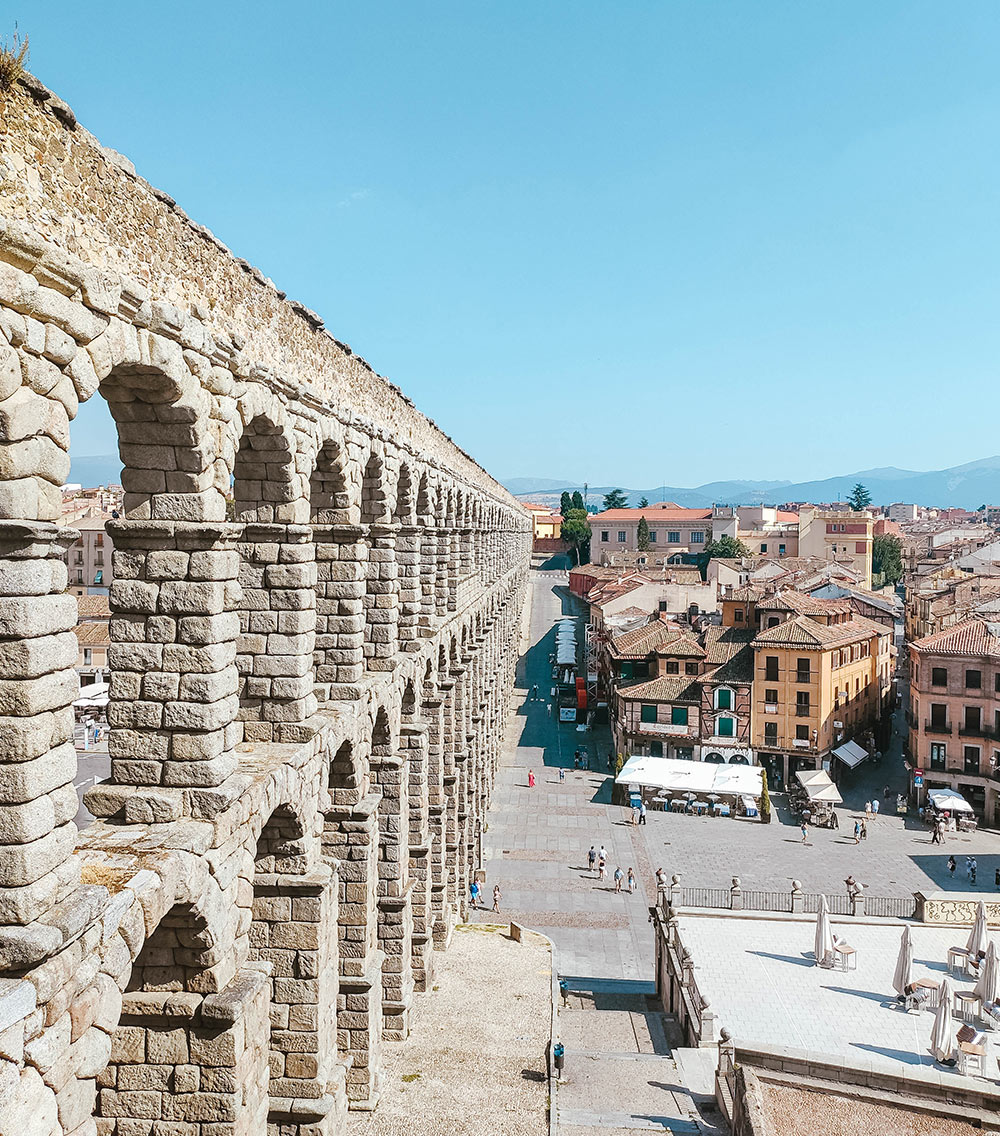
Technology can be a helpful tool when driving in Italy, and there are several options available to you, such as GPS navigation systems and mobile apps like Google Maps and Waze. However, keep in mind that some areas may have poor cellular coverage, and GPS devices may not always be reliable, so it’s always a good idea to have a paper map as a backup.
In addition, it is possible that you’ll be guided down a street that doesn’t exist, or routed through an off-limits ZTL. For that reason make sure to check the route beforehand if it is possible and reroute accordingly.
It’s a good idea to have a map of the area you’ll be driving in before you set off. Paper maps can also be helpful when GPS devices fail or when you need to plan a route.
The question is where to buy those maps. There are some available on Amazon, but you’ll find the best selection and versions here. You can buy them in many places, including airports, gas stations, the Autogrill, bookstores, and tourist info centers.

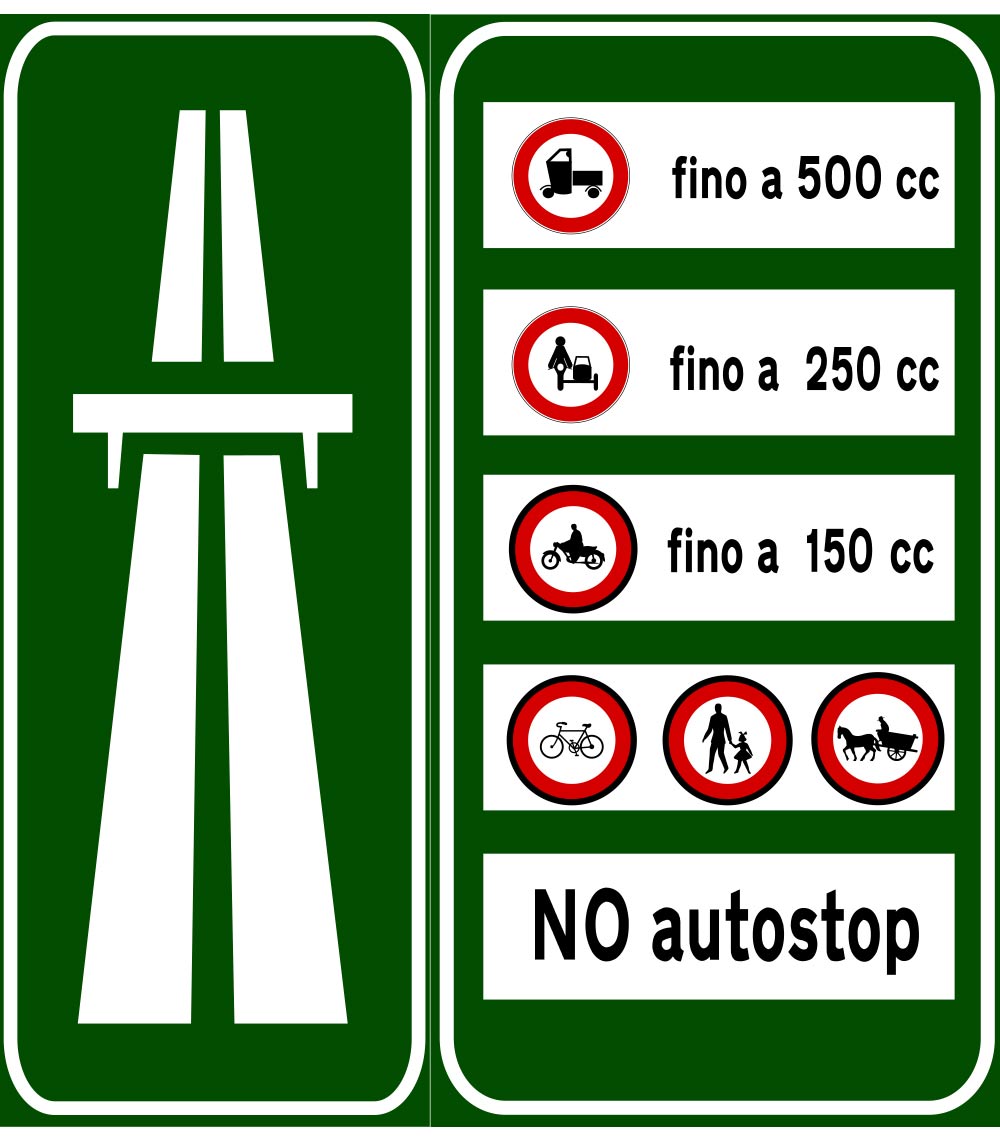
Italian road signs are similar to those in other European countries, but it’s essential to understand the unique signs that you may encounter in Italy. Keep an eye out for ZTL (Zone Traffico Limitato) signs, which indicate restricted traffic zones, and speed limit signs, which are posted in kilometers per hour.
Furthermore, in some cities, you may encounter roundabouts, which require you to yield to traffic already in the circle. Additionally, Italian drivers tend to be more aggressive than those in other countries, and it’s essential to stay alert and avoid distractions while driving.
The most important sign you need to know are the following:
Avoid traveling by car into major Italian cities if at all possible. This is done in part to avoid the typically limited traffic and low emission zones (traffico limitato), but it’s also a bit of a nerve-wracking experience! Italian city driving is hurried and fast-paced.
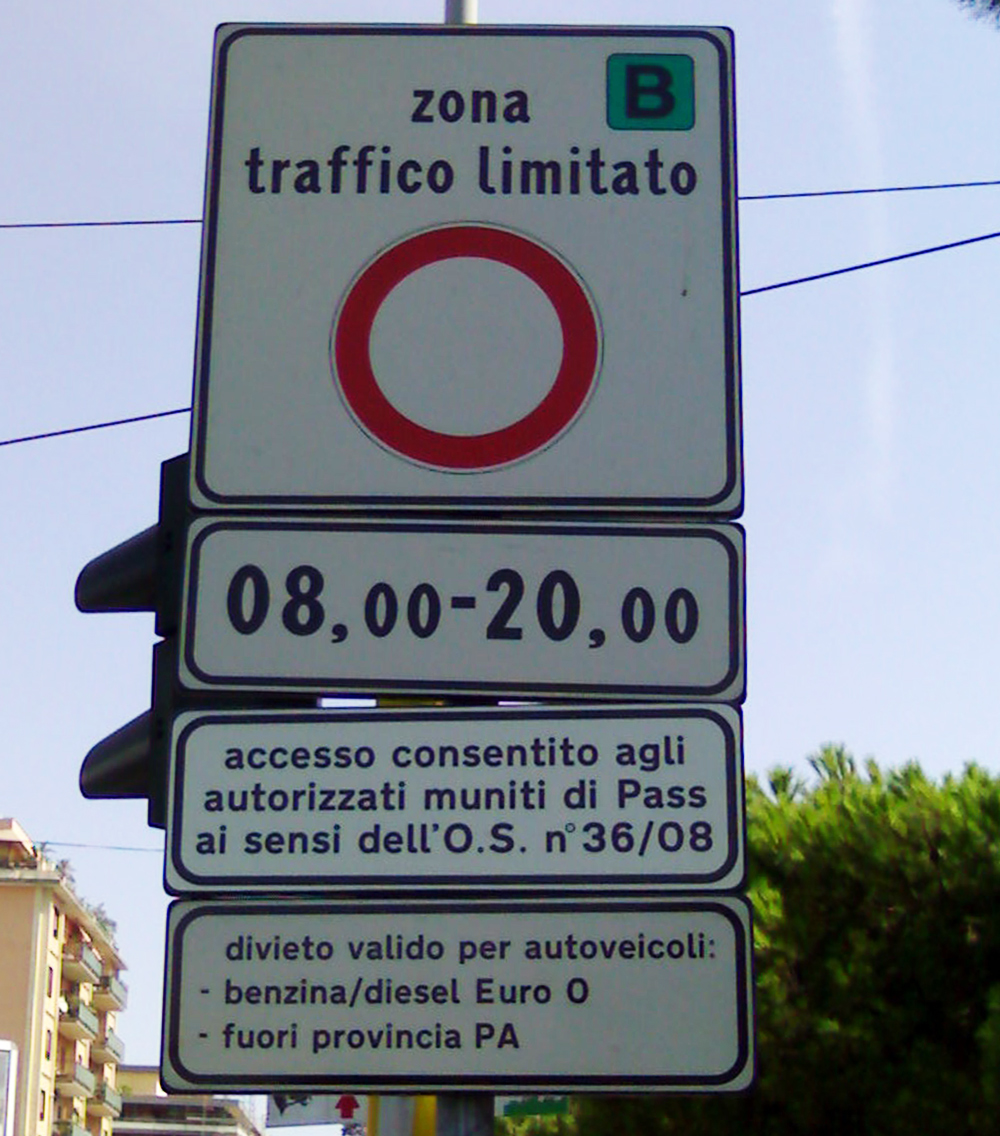
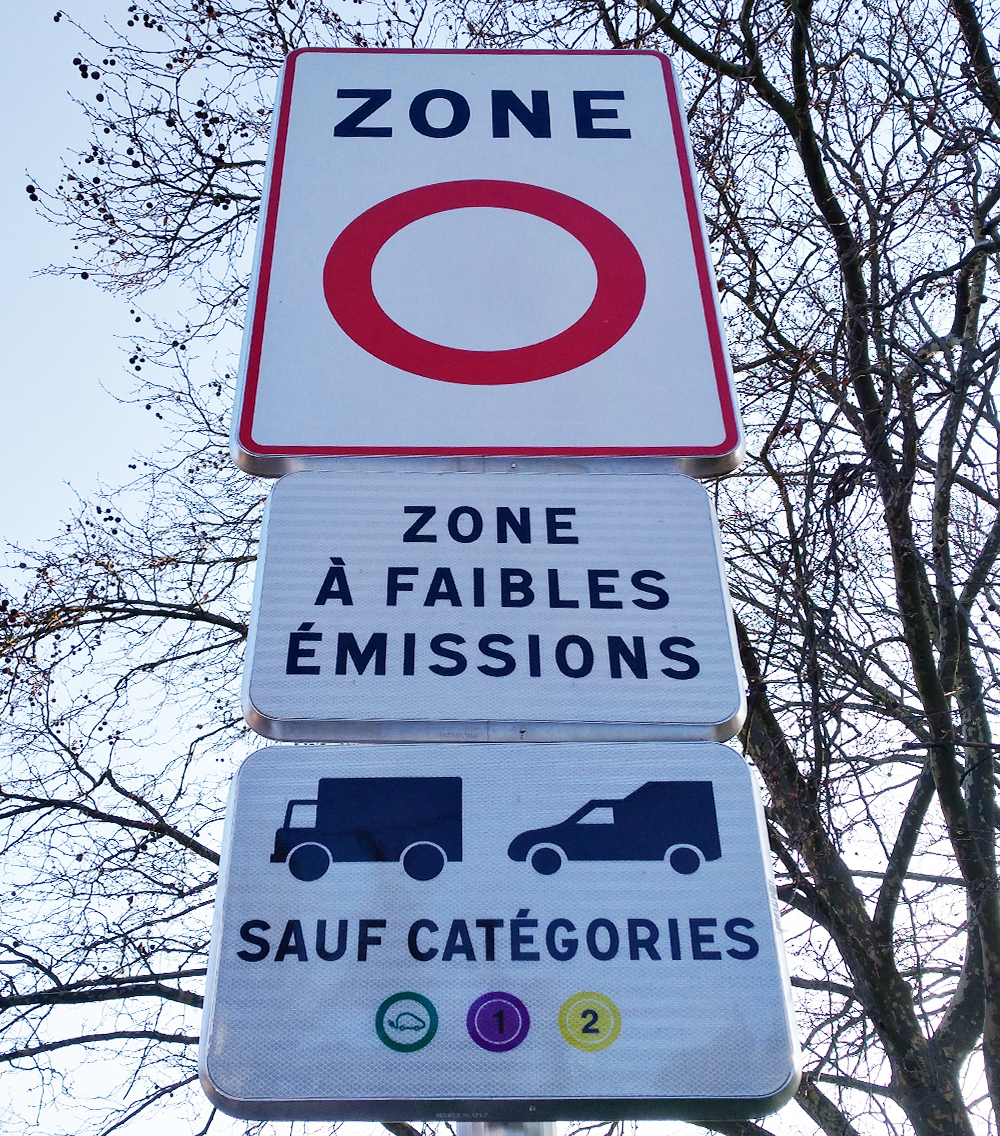
ZTL, or “Zona Traffico Limitato,” is a restricted traffic zone found in many Italian cities. These zones are designed to reduce congestion and pollution in the city center by limiting the number of vehicles that can enter.
If you plan to drive in an Italian city, it’s important to be aware of the ZTL restrictions. Failure to comply with these restrictions can result in fines, which can be quite hefty.
ZTLs are typically marked with signs that indicate when the restrictions are in effect and who is allowed to enter. In most cases, only residents, businesses, and authorized vehicles (such as taxis and emergency vehicles) are allowed to enter the ZTL during certain times of the day.
If you’re not authorized to enter the ZTL, it’s important to find alternative parking outside the restricted area. Many Italian cities have parking garages and lots on the outskirts of the city center that offer affordable daily rates.
Some cities also offer temporary permits that allow visitors to enter the ZTL for a limited amount of time. If you plan to stay in a hotel within the ZTL, be sure to ask the hotel staff about obtaining a permit for your vehicle.
Italy has a variety of different road types, ranging from modern highways to narrow, winding mountain roads. Each type of road has its own specific rules and speed limits, so it’s important to be familiar with them before embarking on a driving journey in Italy.
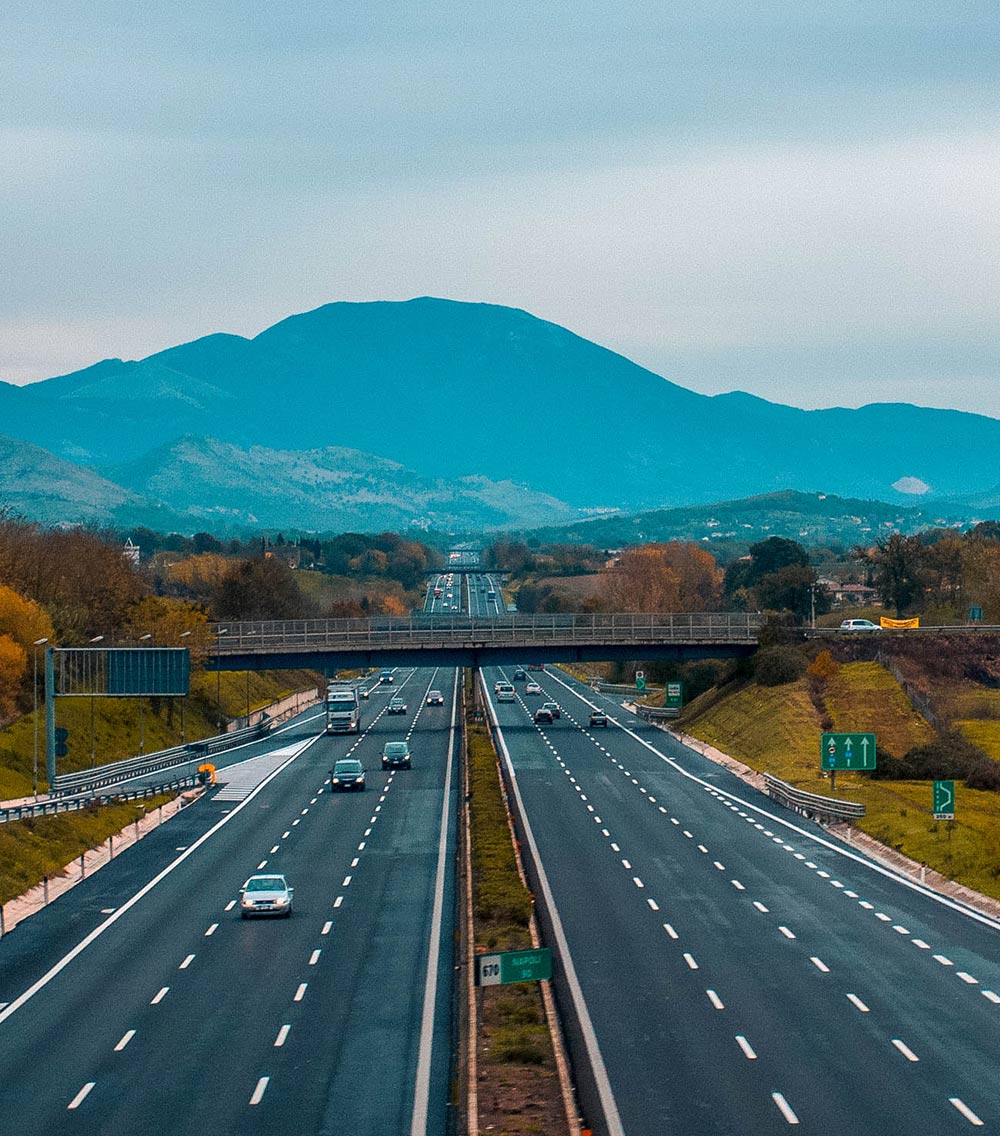
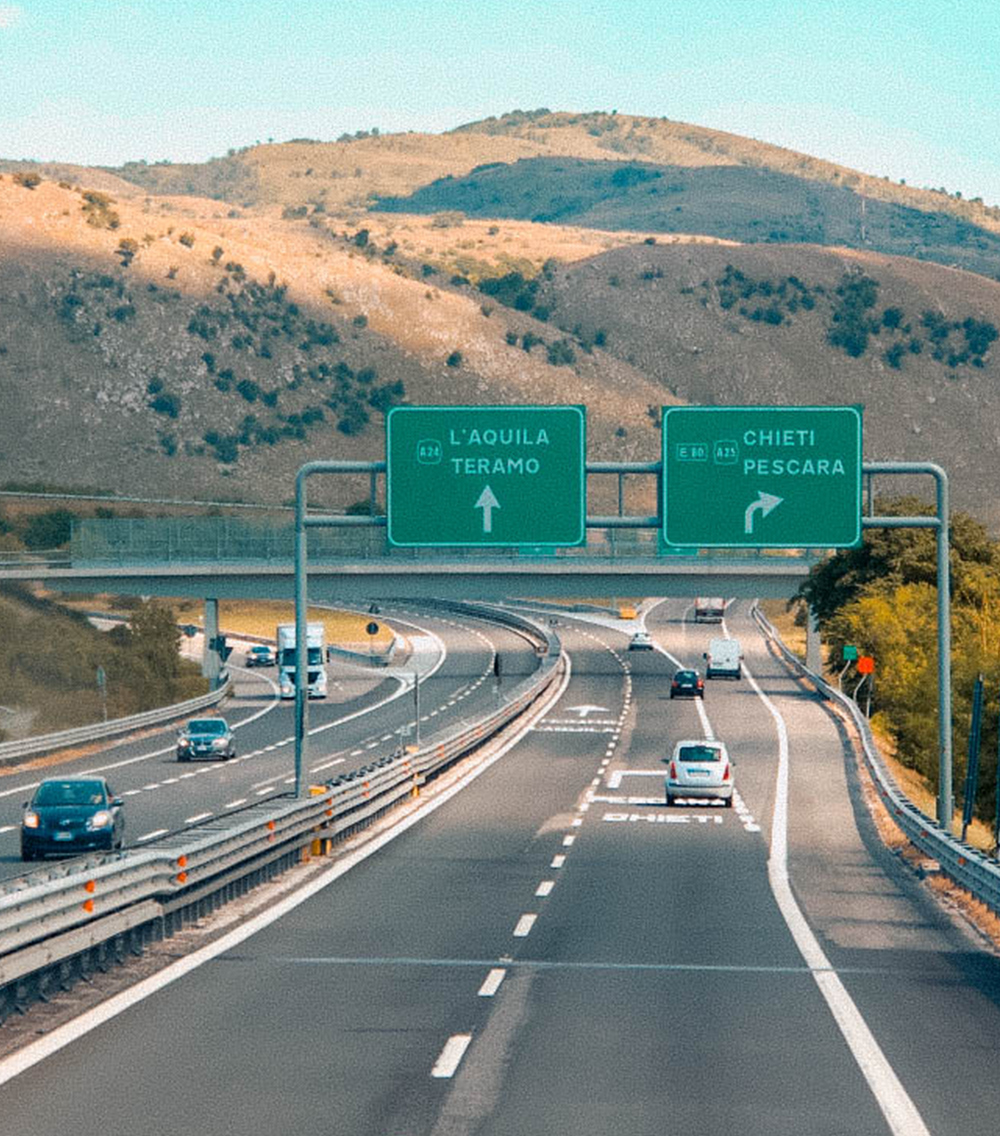
The Autostrade are the highways that crisscross the country, connecting major cities and regions. They are marked with a green sign that reads “Autostrada.” These roads are toll roads, and drivers are required to pay a fee to use them. The fees vary depending on the distance traveled and the type of vehicle.
The speed limit on the Autostrade is 130 km/h (80 mph) for cars and motorcycles, and 100 km/h (62 mph) for buses and trucks. In bad weather conditions, the speed limit is reduced to 110 km/h (68 mph) for cars and motorcycles, and 80 km/h (50 mph) for buses and trucks.
To enter the Autostrada, you need to take a ticket from the toll booth. The ticket shows the entry point and the time of entry. You will need to keep this ticket with you until you exit the highway, as it will be used to calculate the toll fee.
Some tips:
The Autostrade are generally well-maintained and have good signage, making them easy to navigate. However, they can be quite busy, particularly during peak travel times. It’s important to be aware of other drivers and to maintain a safe distance from the vehicle in front of you.
To exit the Autostrada, follow the signs for the exit. When you reach the toll booth, hand over your ticket and pay the toll fee. If you have a toll pass, you can simply drive through the designated lane without stopping.
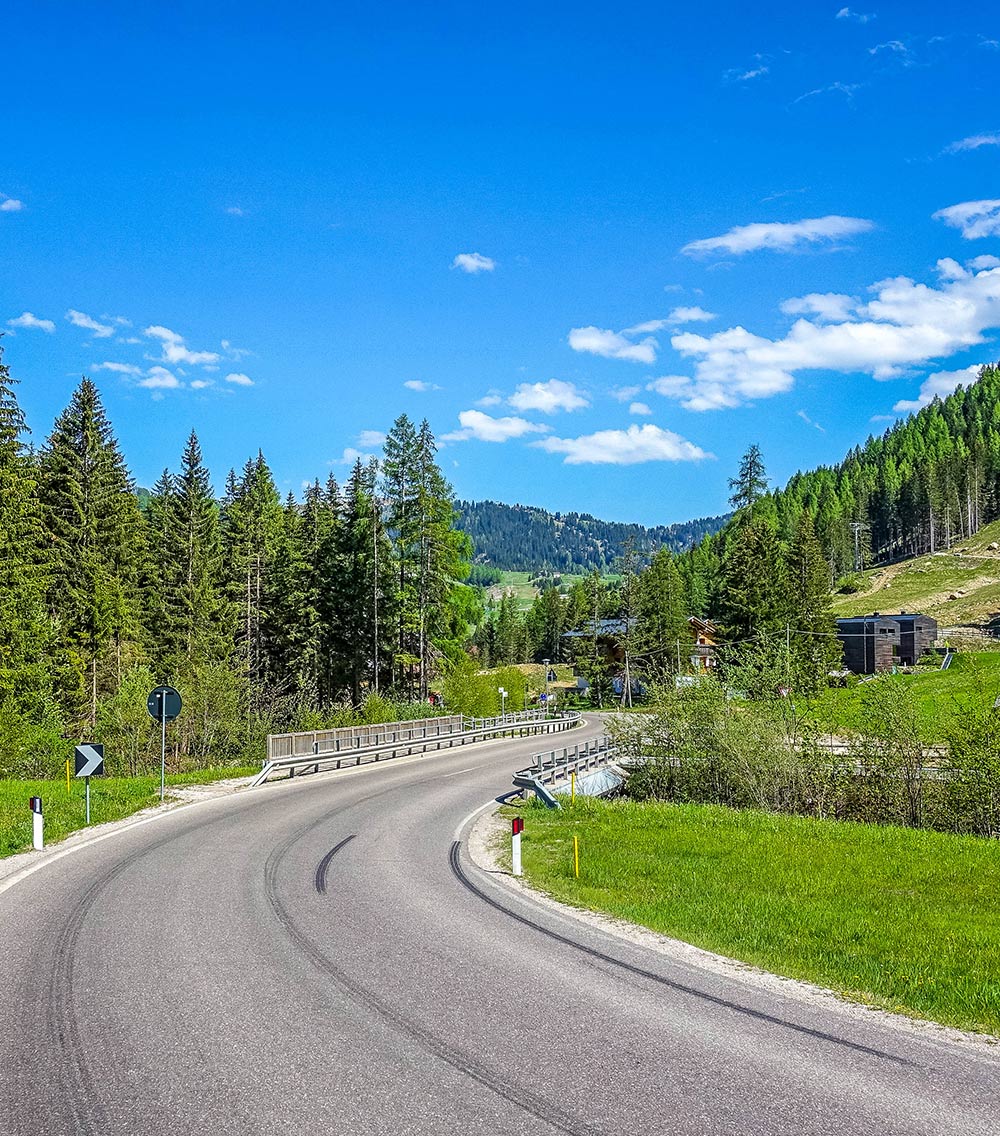
Strade Statali are state highways that connect smaller cities and towns to the Autostrade. They are marked with a blue sign that reads “Strada Statale.” The speed limit on these roads is generally 90 km/h (56 mph) for cars and motorcycles, and 80 km/h (50 mph) for buses and trucks.
Strade Provinciali are provincial roads that connect local towns and villages. They are marked with a white sign that reads “Strada Provinciale.” These roads can be narrow and winding, and they may not have a center line or guardrails. The speed limit on Strade Provinciali is generally 70 km/h (43 mph) for cars and motorcycles, and 60 km/h (37 mph) for buses and trucks.
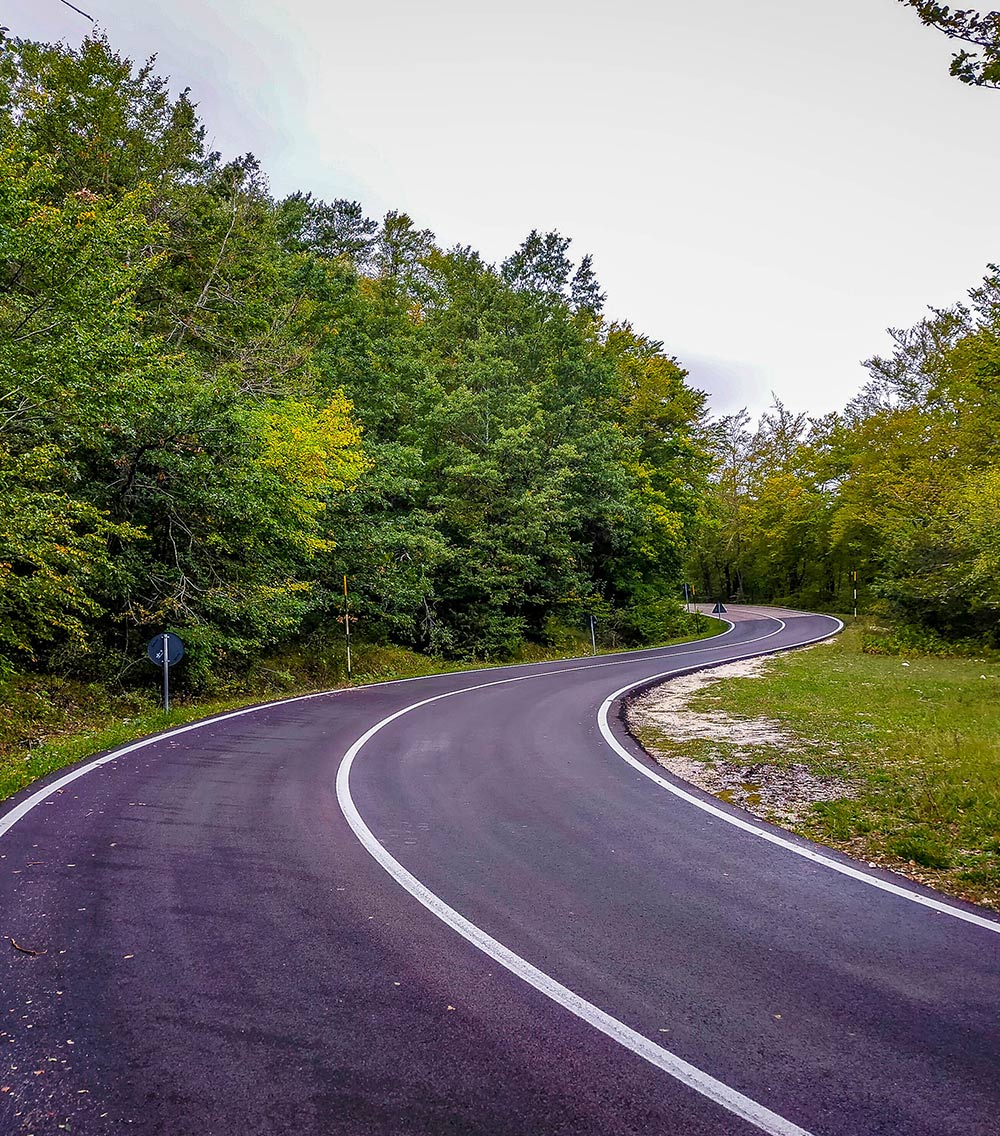
These roads are generally, in the old towns and they are really small roads. This can be a “zona 30”, the speed limit is 30km/h, or “zona residenzale”, which means a place full of pedestrians, bicycles, and other obstacles.
“Strada bianca” literally translates to “white road” in English. In Italy, it is a term used to describe unpaved or dirt roads that are typically found in rural or remote areas. These roads are often narrow and winding, and may be difficult to navigate in certain weather conditions, such as heavy rain or snow.
Strade bianche can be found in various regions of Italy, particularly in Tuscany, Umbria, and other central regions. They often lead to small villages, farms, and vineyards, making them popular among tourists looking to explore the countryside and experience a more authentic side of Italy.
When driving on a strada bianca, it’s important to exercise caution and drive slowly, as the road conditions may be uneven and unpredictable. It’s also a good idea to have a GPS or map to help navigate, as these roads may not be well-marked.
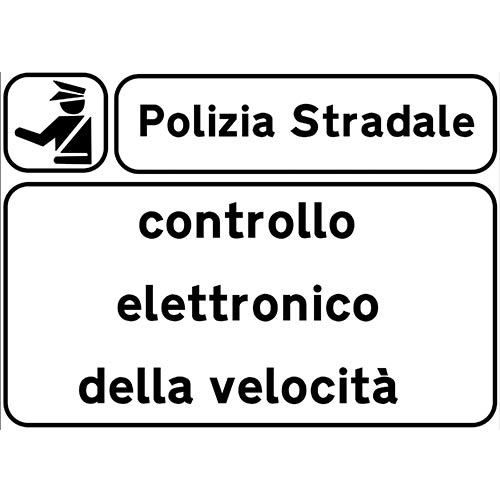
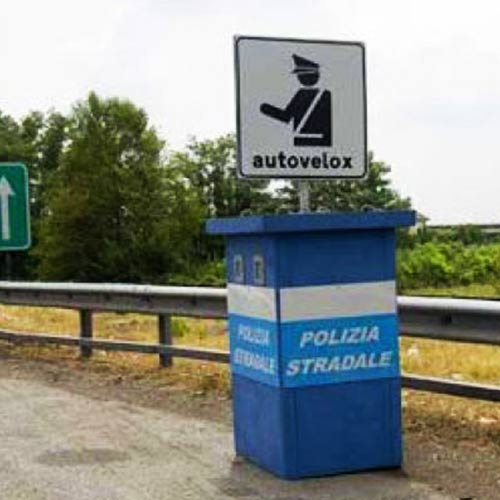
Autovelox is the Italian term for speed cameras, which are commonly used in Italy to monitor and enforce speed limits on the roads. These speed cameras are typically placed in high-risk areas, such as accident blackspots, and are often marked with signs to warn drivers.
There are two main types of Autovelox used in Italy: fixed and mobile. Fixed Autovelox are permanent installations that are typically placed on motorways, while mobile Autovelox are mounted on vehicles or placed in temporary locations, such as on the side of the road.
It’s important to note that the use of Autovelox in Italy is strictly enforced, and speeding fines can be quite steep. If you are caught by a speed camera, you may receive a fine in the mail, which can range from €41 to €3,000 depending on the severity of the offense. Additionally, if you are a foreign driver, you may be required to pay the fine on the spot or risk having your vehicle impounded.
To avoid getting caught by Autovelox in Italy, it’s important to obey posted speed limits and be aware of your surroundings. Many Italian drivers use a radar detector or GPS device to alert them to the presence of Autovelox, although it’s important to note that using these devices is illegal in Italy.
In addition to Autovelox, there are also speed traps or “blitz” operations carried out by Italian police, particularly during holiday periods or peak travel times. These operations involve setting up checkpoints or radar guns to catch drivers who are exceeding the speed limit. If you are caught by a speed trap, you may receive a fine on the spot or be required to pay it later.
The Sistema Tutor system calculates the average speed for a section of an autostrada. In essence, a camera records your license plate when you pass under it and again when you exit the segment. The average speed you traveled that segment at is then calculated by a system. You receive a fine if your speed exceeds the legal limit.
Parking in Italy can be a challenge, especially in busy cities where space is limited. However, there are several options available for travelers looking to park their car while exploring the country. One of the most common options for parking in Italy is street parking. Here there are 3 options:
Parking spaces with white lines usually mean that you can park for free. But make sure that they are not reserved for residents, in some places, it’s like that.
Yellow parking spots are generally reserved, such as for the disabled.
Parking areas are marked with blue lines and require payment at a nearby meter. These parking spaces can be difficult to find in busy areas, and it’s important to pay attention to parking signs to avoid fines or towing. It’s also important to note that some areas, particularly in historic city centers, may have restricted parking or “Zona Traffico Limitato” (ZTL) zones where only residents are allowed to park.
Another option for parking in Italy is parking garages or “garage” which can be found throughout the country, particularly in urban areas. These garages offer secure parking and typically charge a fee based on the amount of time parked. It’s important to note that many parking garages in Italy have height restrictions, so if you are traveling in a larger vehicle, be sure to check ahead of time to ensure there is adequate space.
In addition to street parking and garages, there are also parking lots or “parcheggio” available in many areas. These lots are typically located on the outskirts of cities and offer long-term parking for a fee. While these lots can be a good option for travelers who plan to explore the city on foot or by public transportation, they may not be the most convenient option for those who want to park near their destination.
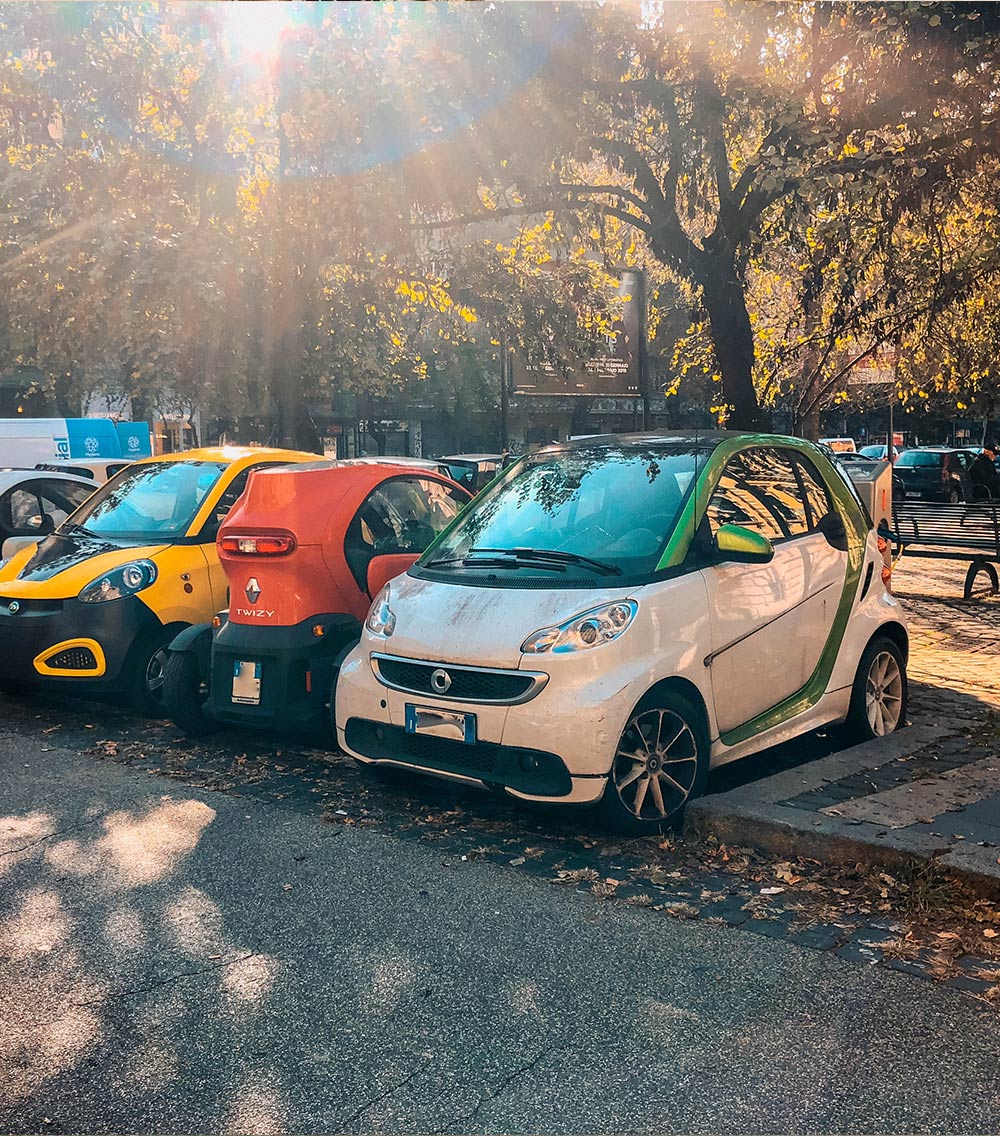

When parking in Italy, it’s important to follow local rules and regulations, which may vary depending on the location. Some general tips for parking in Italy include:
Italian driving culture can be quite different from what some travelers are used to in their home countries. It’s important to be aware of these differences and adapt your driving style accordingly when driving in Italy. We present below some hints about the driving culture in Italy. To be honest, this behavior doesn’t look strange to us, because here in Greece we drive in almost the same way but maybe it will look strange to you.
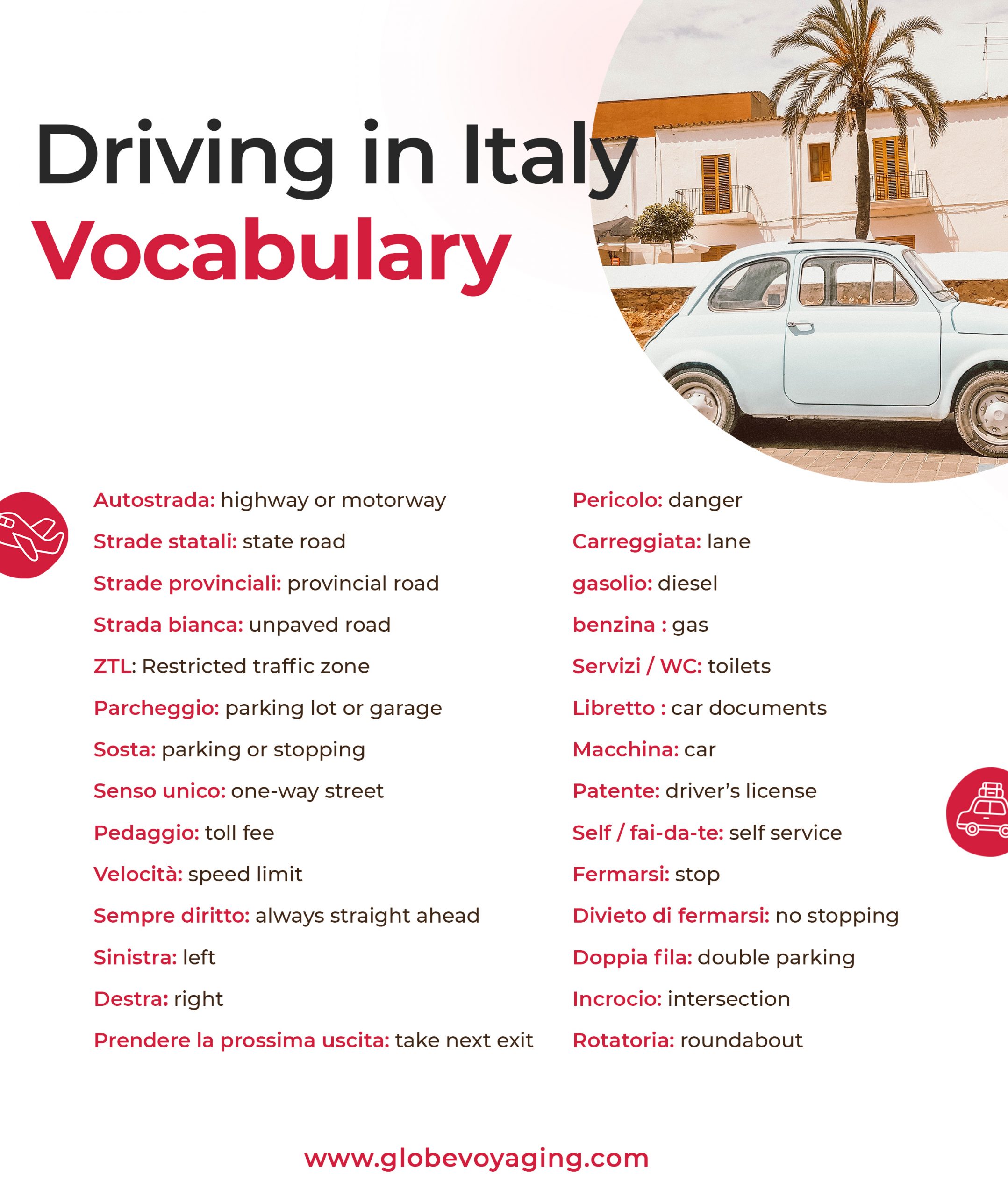
One of the most notable aspects of Italian driving culture is the prevalence of aggressive driving. Italian drivers tend to be more assertive on the road, using their horns and making quick maneuvers to navigate through traffic. This can be intimidating for some drivers, but it’s important to remember that this is a cultural norm and not necessarily a sign of road rage.
Another aspect of Italian driving culture is the use of hand gestures to communicate with other drivers. Italians often use hand gestures to signal their intentions or to express frustration with other drivers. Some common gestures include waving the hand back and forth to signal “what do you want?”, holding the palm up to say “calm down”, or shaking the fist to express anger.
Experiencing car trouble or getting into an accident can be a stressful situation for any driver, especially in a foreign country like Italy. Here are some important things to keep in mind if you encounter car trouble or get into an accident while driving in Italy:
If you are involved in an accident, first check yourself and your passengers for injuries. If anyone is injured, call for emergency medical services immediately.
You need to call the police at 112.
Make sure to obtain the driver’s personal information as well as any witness’s personal information. It might be difficult to convince an Italian that they saw the accident.
Take pictures of the vehicles, license plates, and any other accident-related details at the scene. To report damage to the vehicle, get in touch with the rental car company.
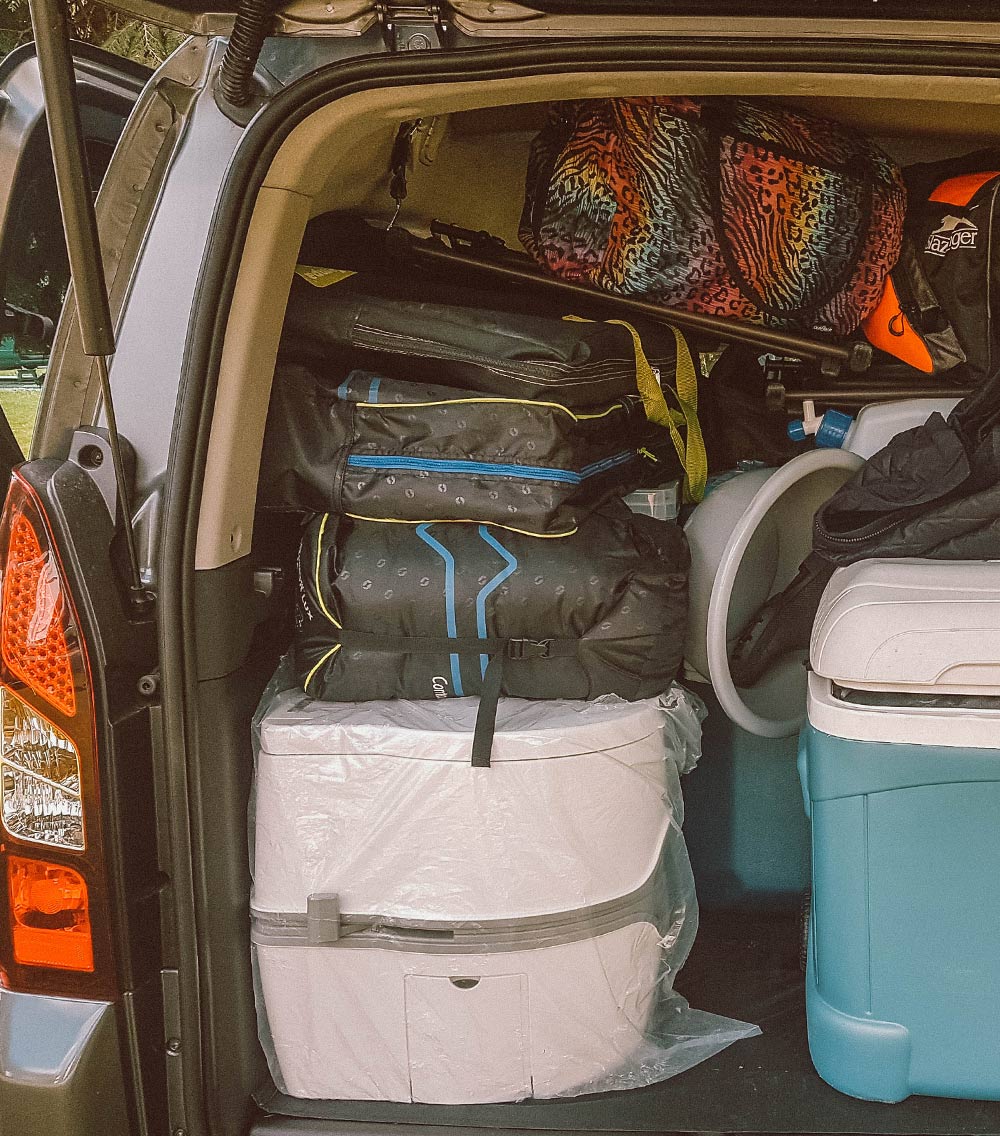
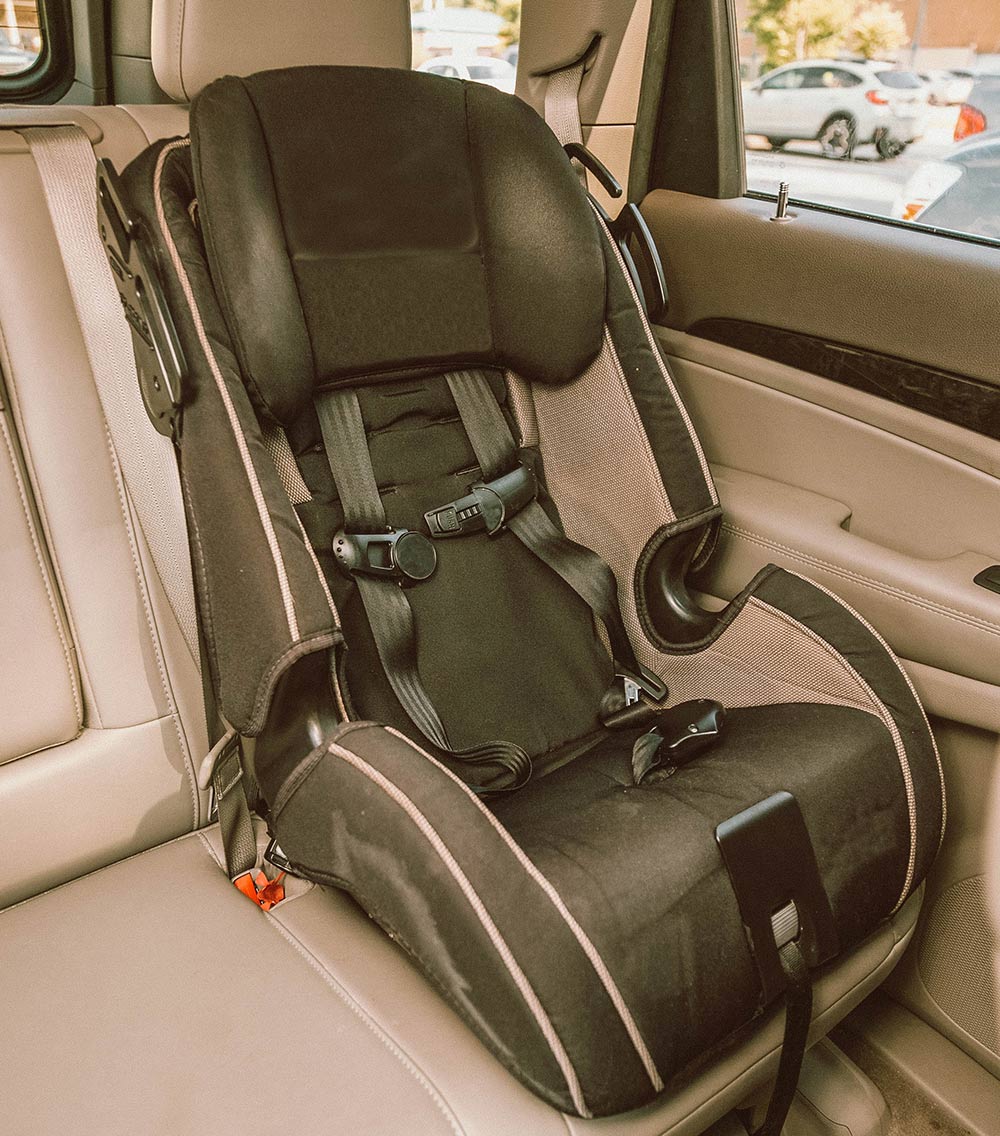
If you plan to travel to Italy with children, it’s important to know the rules and regulations for driving with kids in the car. Here are some things to keep in mind:
Children under 4 years of age must be seated in a child safety seat appropriate for their size and weight. Children over 4 years of age and less than 12 years of age must use a booster seat if they are less than 1.50 meters tall. If you’re renting a car, you can reserve a car seat. Usually, you pay for a certain period and then you can use it for free for the rest of the rental period. The other option is to get one from home.
Make sure to consider the size of your vehicle when traveling with children. It’s important to have enough space for car seats and luggage. If you plan to rent a car, make sure to book a car size that is appropriate for your family’s needs. In order to reduce stress while driving on narrow roads and parking in tight spaces, you want to make sure that your passengers and equipment have enough space, but with a car that is as small as possible.
Autogrills are rest stops located along Italy’s highways. They offer a variety of food options, and restrooms, and often have play areas for children. Taking frequent breaks at autogrills can help break up long drives and keep children entertained.
It’s also a good idea to bring snacks, toys, and games to keep children entertained during the journey.
Remember, safety is always the top priority when driving with children. Be sure to follow all safety guidelines and regulations to ensure a safe and enjoyable trip.
While Italy is generally a safe country for travelers, it’s important to be aware of some common road crimes that can occur. Here are some tips to help you avoid these situations:
One common road crime in Italy is the “false flat tire” scam. This involves someone pretending to signal you to pull over to the side of the road, claiming that you have a flat tire. Once you stop, someone else may come along and steal your belongings while you are distracted.
To avoid this scam, do not pull over unless you notice an actual problem with your car. If someone is signaling you to stop, continue driving until you find a safe place to stop, such as a gas station or a busy parking lot.
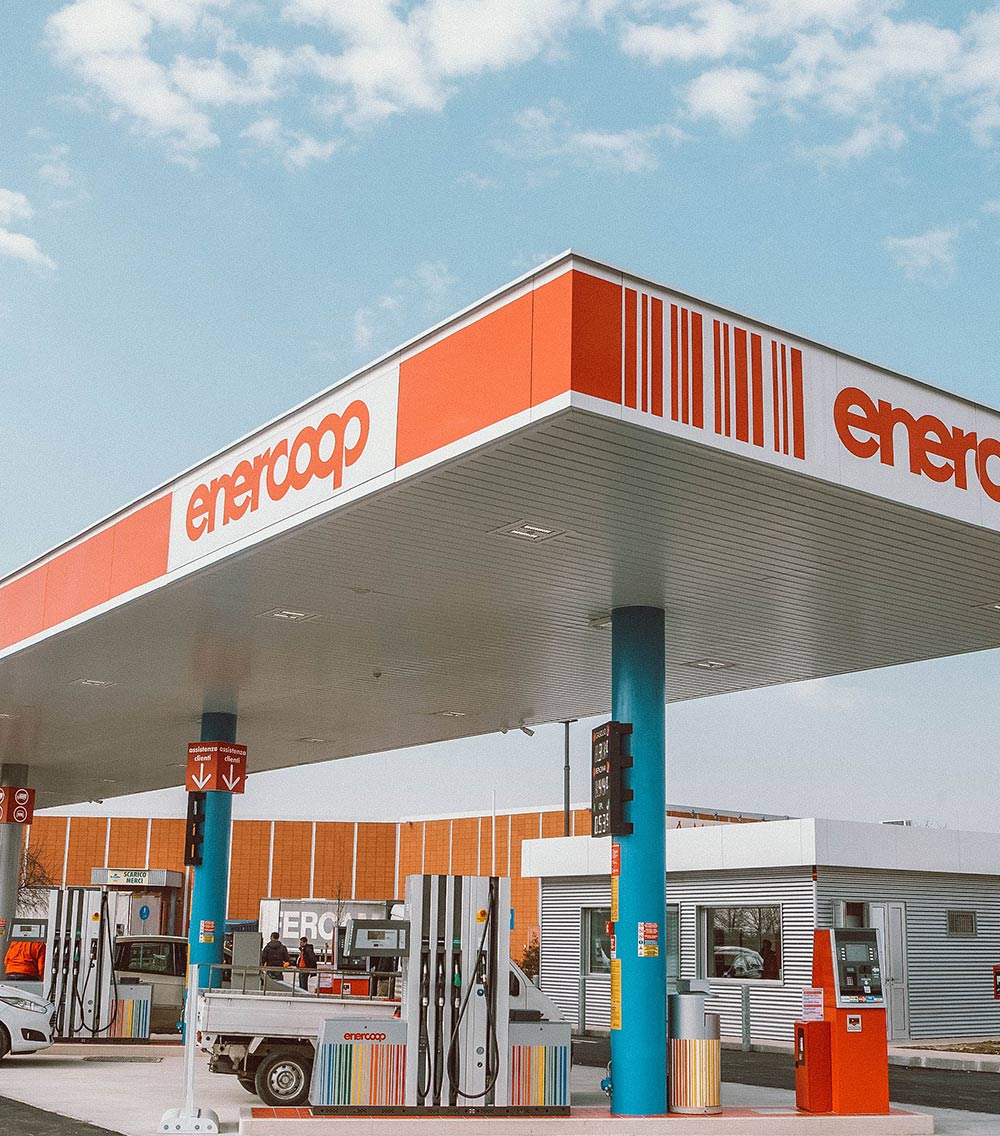
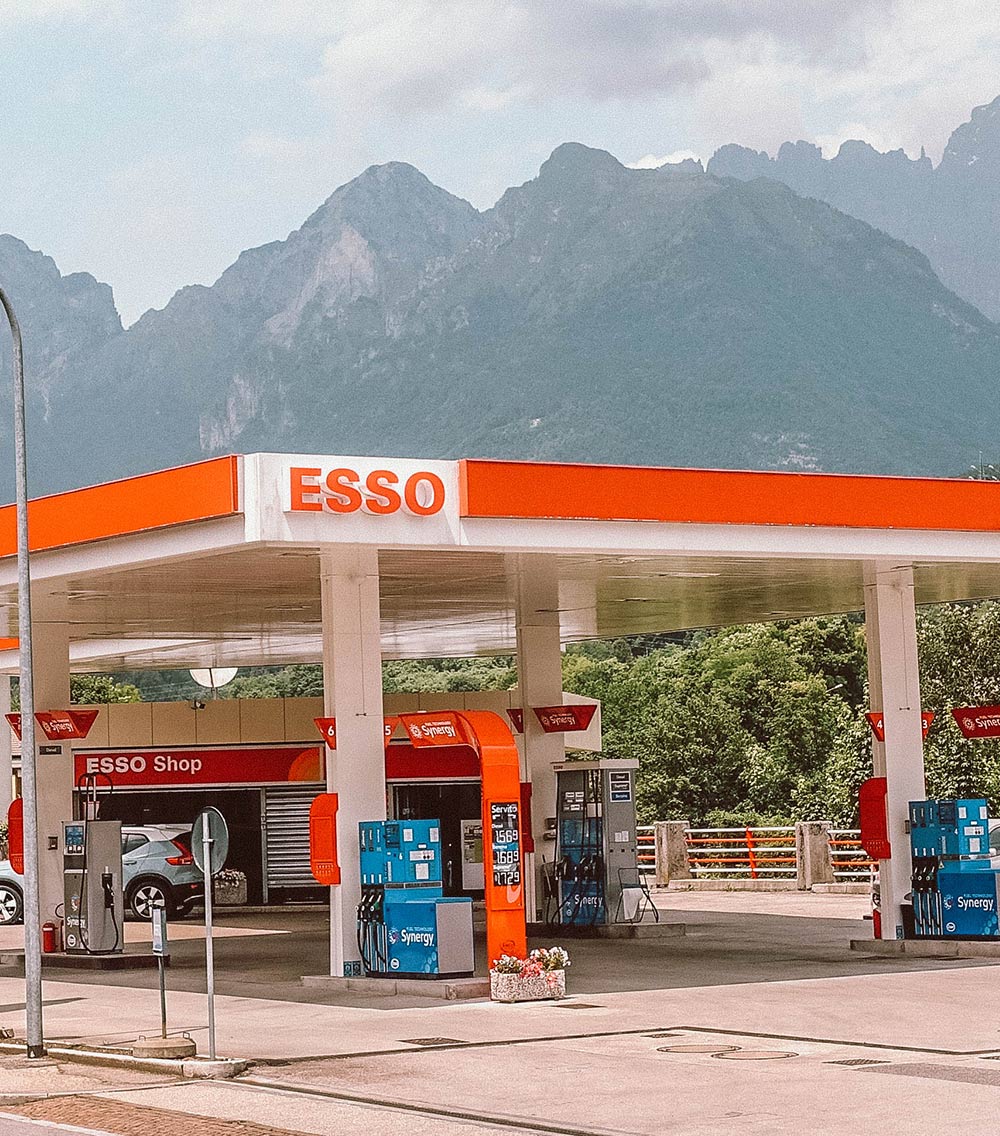
Another common scam involves someone distracting you while you are pumping gas, while another person steals your belongings from your car. To avoid this, keep your car doors locked while you are pumping gas, and keep your valuables out of sight.
Thieves may target rental cars, particularly those with foreign license plates, and steal items from the trunk/boot. To avoid this, park in well-lit and busy areas, and do not leave any valuables in the car.
By being aware of these common road crimes and taking the appropriate precautions, you can help ensure a safe and enjoyable trip to Italy.
Thieves may target rental cars, particularly those with foreign license plates, and steal items from the trunk/boot. To avoid this, park in well-lit and busy areas, and do not leave any valuables in the car.
By being aware of these common road crimes and taking the appropriate precautions, you can help ensure a safe and enjoyable trip to Italy.
Familiarize yourself with the rules of the road in Italy, including speed limits, right of way, and road signs. Keep in mind that Italian drivers can be aggressive, so be prepared for sudden lane changes and tailgating.
Make sure you have all the necessary documents, such as your driver’s license, rental car documents, and insurance papers.
Italian roads and parking spaces can be narrow and crowded, so renting a small car can make it easier to navigate and find parking.
Use a GPS or a smartphone app to help navigate Italian roads. This can be especially helpful in cities where roads can be confusing and congested.
If possible, avoid driving in big cities like Rome and Naples. Public transportation can be a more efficient and stress-free way to get around.
Pay attention to parking rules, especially in cities. Look for signs indicating whether parking is allowed, and be aware of ZTL (Limited Traffic Zones) areas where only authorized vehicles are allowed to enter.
Italy has strict laws regarding drinking and driving. If you plan to consume alcohol, it’s best to use public transportation or a taxi instead of driving.
Finally, always stay alert while driving in Italy. Pay attention to other drivers, road conditions, and potential hazards. By staying focused, you can help ensure a safe and enjoyable driving experience in Italy.
Yes, Americans can drive in Italy using a valid US driver’s license, an International Driving Permit (IDP), and their passport. The IDP translates your license into Italian and is recognized in Italy as a valid driving document. You must be at least 18 years old to drive in Italy, and it is also important to note that the minimum age for renting a car in Italy is 21, although some rental agencies may require drivers to be 25 or older. It is always a good idea to check with the rental agency for their specific requirements. Additionally, it is recommended to have a good understanding of Italian traffic laws and road signs before driving in Italy.
Yes, you can drive in Italy with a valid US driver’s license, as long as it is accompanied by an International Driving Permit (IDP). The IDP translates your license into Italian and is recognized in Italy as a valid driving document. It is important to note that the IDP is not a standalone document, and you must also carry your original driver’s license with you while driving in Italy. Additionally, it is recommended to have a good understanding of Italian traffic laws and road signs before driving in Italy.
Driving in Italy can be challenging, especially for those who are not familiar with Italian traffic laws and driving culture. Italian drivers are known for their aggressive and assertive driving style, and the roads can be crowded and chaotic in some areas, particularly in cities.
Some specific challenges of driving in Italy include navigating narrow and winding roads, dealing with heavy traffic and congestion, understanding and following Italian road signs, and dealing with limited parking options. Additionally, some areas of Italy have restricted traffic zones (ZTLs) that can be difficult to navigate for drivers who are unfamiliar with the area.
Despite these challenges, driving in Italy can also be a great way to explore the country and access remote areas that may not be easily accessible by public transportation. With proper planning, research, and awareness of the challenges, driving in Italy can be a rewarding and enjoyable experience.
Driving in Italy as a tourist can be safe, but it is important to take certain precautions mentioned above in the article and be aware of the risks. Here are some things to keep in mind:
Driving in Italy is not the same as in the US. There are differences in driving laws, road signs, and driving culture. For example, in Italy, drivers drive on the right side of the road, whereas in the US, drivers drive on the left side of the road. Additionally, speed limits are in kilometers per hour in Italy, and the road signs and markings may be different than those in the US. Italian drivers also tend to be more aggressive and assertive on the road than American drivers. It is important to familiarize yourself with Italian driving laws and customs before driving in Italy.
Yes, foreigners are allowed to drive in Italy with their valid foreign driver’s license for up to one year after their entry into the country. However, if the foreign driver’s license is not written in Italian, an International Driving Permit (IDP) may be required to accompany the license. It is recommended to check with the local Italian authorities or with the car rental company for any specific requirements or restrictions that may apply to foreign drivers.
If you lose your Autostrada ticket before exiting, do not panic. You will need to approach the toll booth attendant and explain your situation. The attendant will then ask you for information such as your entry point, the time you entered, and the type of vehicle you are driving. Based on this information, the attendant will calculate the fee you owe and issue you a new ticket for that amount. In some cases, the attendant may ask to see your ID or passport to verify your identity. Keep in mind that this process may cause some delay and inconvenience, so it’s best to keep your ticket in a safe and easily accessible place while traveling on the Autostrada.
To rent a car in Italy, you must be at least 18 years old and have held a valid driver’s license for at least one year. However, some rental car companies may have their own age requirements and additional fees for drivers under 25 years old. It’s best to check with your rental car company for their specific age requirements and policies.
Yes, there are several helpful apps for driving in Italy. Here are a few:
There are several driving maps available for Italy, and the best one for you may depend on your specific needs and preferences. Here are a few options to consider:
If you received a driving ticket in Italy, you should pay it as soon as possible to avoid any additional fines or legal issues. The fine amount and payment instructions should be listed on the ticket itself.
If you don’t speak Italian or don’t feel comfortable handling the matter yourself, you can seek the assistance of a local attorney or traffic ticket agency. They can help you understand the charges and process the payment on your behalf.
It’s also worth noting that failure to pay the fine can result in further legal action and potentially even an arrest warrant, so it’s important to address the issue promptly.
Yes, you can drive in Italy without using the Autostrada or toll roads. There are many secondary roads and highways that connect different cities and towns in Italy. While they may take longer than the Autostrada, they offer a more scenic and leisurely way to explore the countryside.
Keep in mind that some of these secondary roads may be narrow and winding, and may require extra caution while driving. Additionally, some towns and cities in Italy have restricted driving zones known as ZTLs (Zone Traffico Limitato), which are only accessible to authorized vehicles. It is important to be aware of any local driving regulations and signage to avoid any fines or penalties.
There are several ways to locate electric car charging stations in Italy. Here are a few options:
In Italy, tolls can be paid in several ways. The most common way is to use cash or a credit card to pay at the toll booth. Some toll booths also accept electronic payment methods such as Telepass or Viacard, which can be preloaded with credit and allow for quicker and easier payment. It’s important to note that some toll booths may only accept certain payment methods, so it’s a good idea to have multiple payment options available.
If you’re renting a car in Italy, some rental companies may offer toll payment services as part of their packages. These services may include the use of a transponder or automatic toll payment system, which allows you to pass through toll booths without having to stop and pay manually.
If you don’t have a Telepass or Viacard and don’t want to pay cash at the toll booth, you can also purchase a prepaid toll card called the “Carta Si Via” at certain authorized points of sale such as gas stations, tobacco shops, and some toll plazas. This card can be used to pay for tolls on most of the Italian highways and can be recharged as needed.



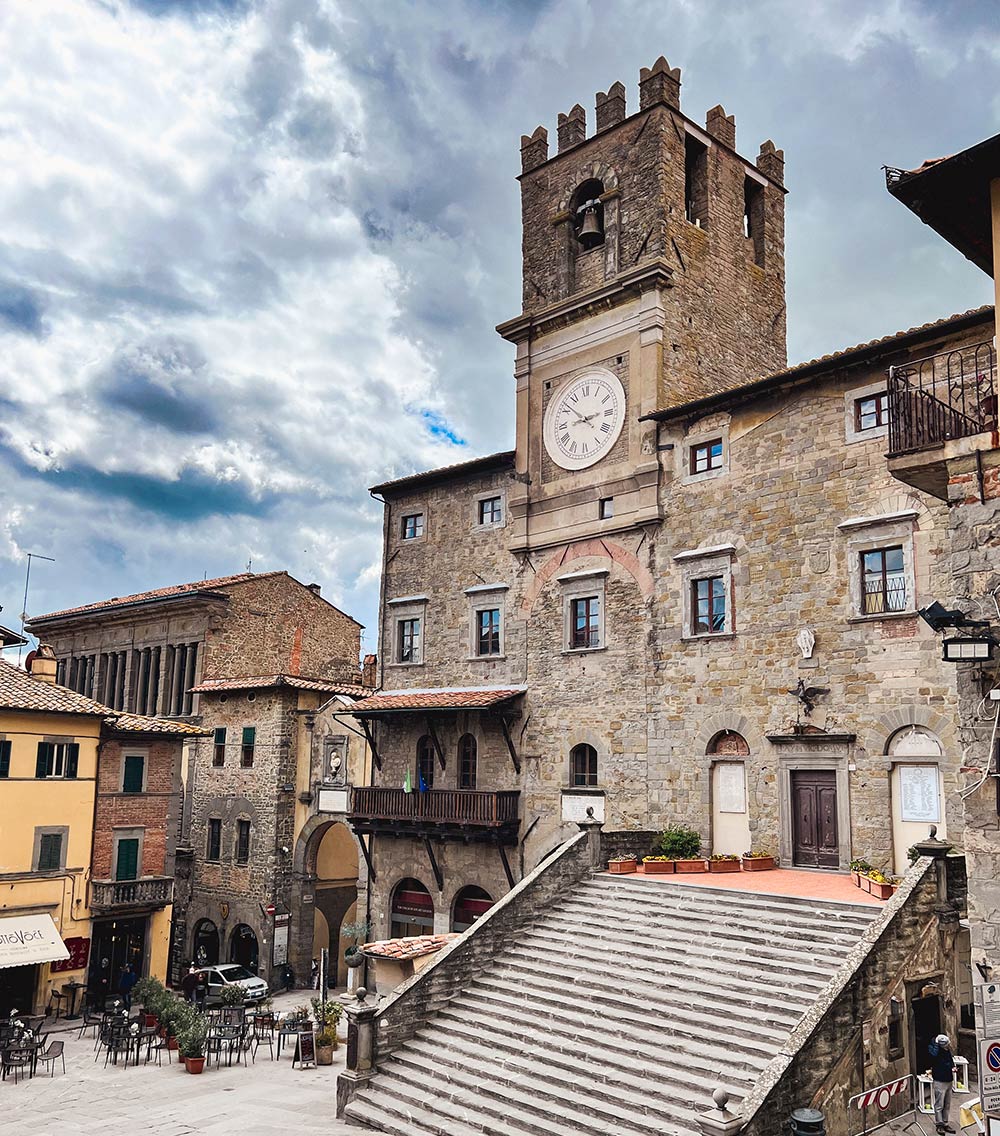
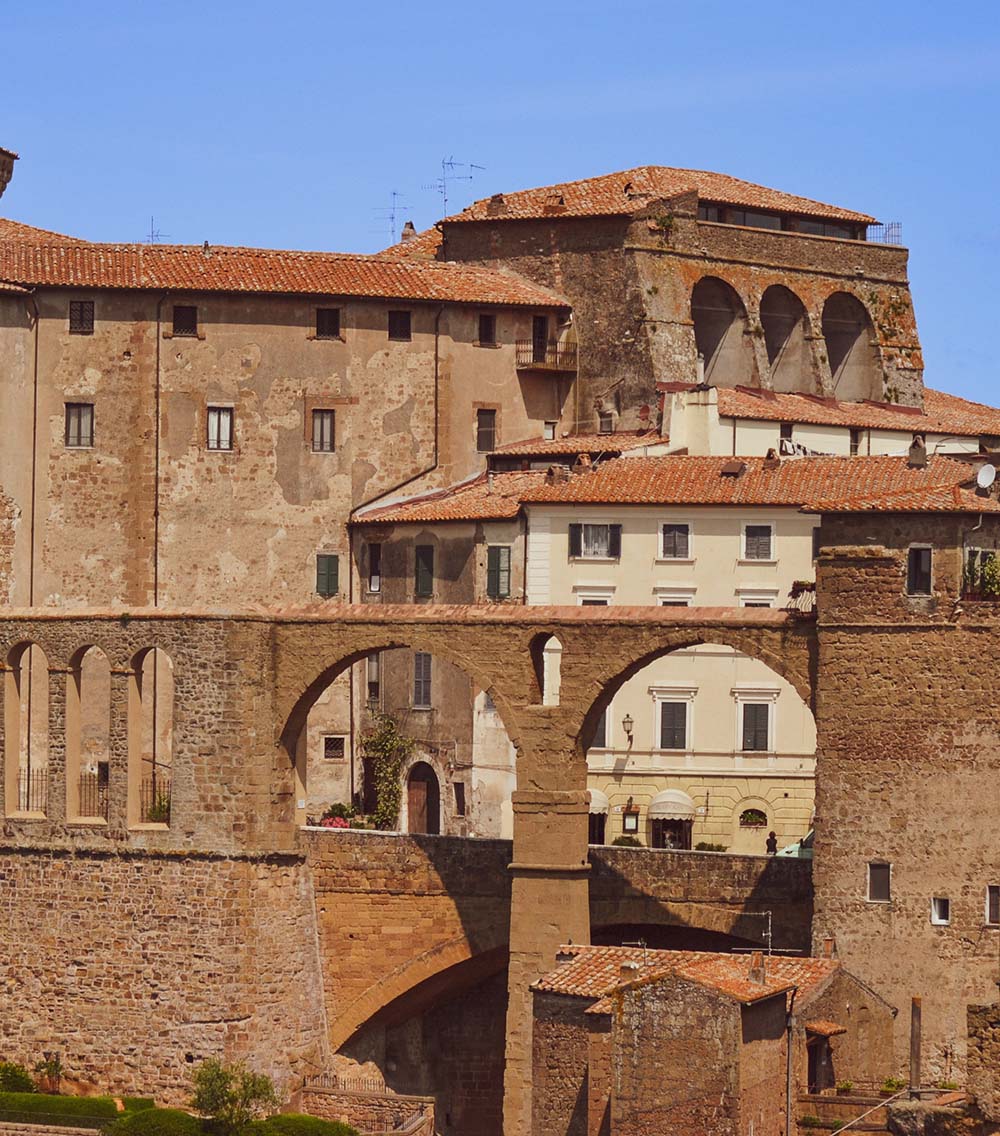


No Comments